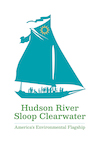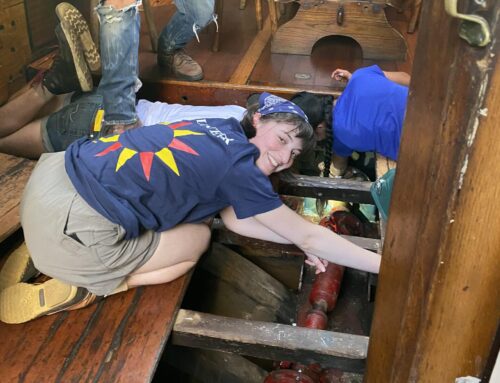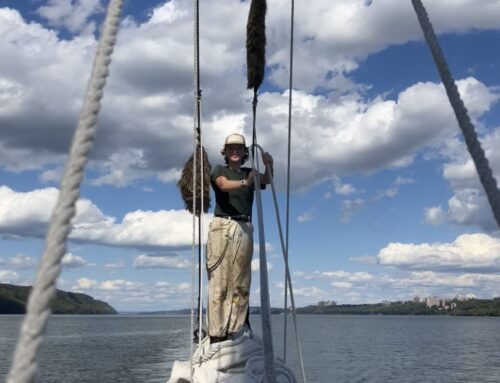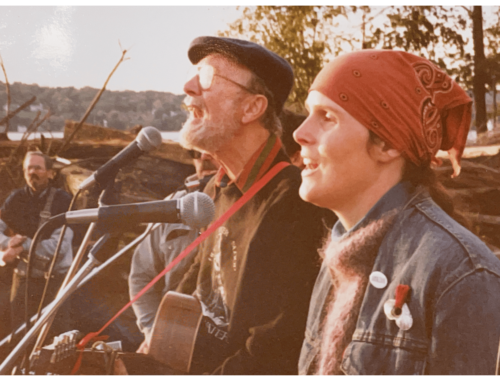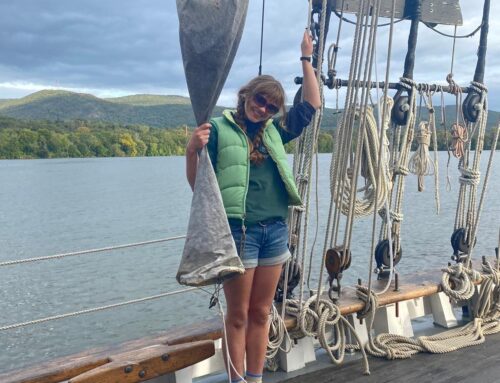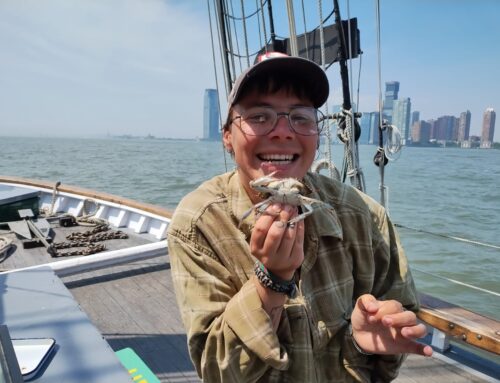Dear Clearwater,
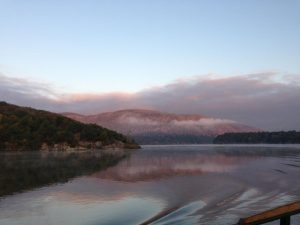 Long, long ago, before personal computers were invented, the Clearwater used to honor the fall harvest by having a pumpkin sail the last two weeks in October. We would start in Albany, loading the boat full of pumpkins and a volunteer crew of musicians. Then we’d set sail down the Hudson River, stopping at all the towns along the way to have a little festival and sell our pumpkins. Just before Halloween, we’d sail into New York City’s South Street Seaport to have a big festival and sell a boatload of pumpkins.
Long, long ago, before personal computers were invented, the Clearwater used to honor the fall harvest by having a pumpkin sail the last two weeks in October. We would start in Albany, loading the boat full of pumpkins and a volunteer crew of musicians. Then we’d set sail down the Hudson River, stopping at all the towns along the way to have a little festival and sell our pumpkins. Just before Halloween, we’d sail into New York City’s South Street Seaport to have a big festival and sell a boatload of pumpkins.
Those two weeks were one of the most magical times on the Hudson. They were the same two weeks that Mother Nature would gradually take autumn down the river from Albany to New York City. Each day we were sailing between riverbanks covered with the bright yellow, golden orange, and flaming red leaves of fall foliage.
One year we decided to make the two-week voyage a true reenactment of an historical sloop’s journey down the Hudson, stopping at towns along the way from Albany to New York — without once turning on the motor. The Captain, Frank Fulchiero, would study the tide tables so that at each stop we could start sailing when the tide began to go out. As we approached each destination, Frank would steer the sloop as close as he could to the dock and drop the sails with just enough momentum to bring us close to the dock. Then the crew would begin throwing dock lines to the people on the dock. As soon as the first dock line was attached, we’d all grab the line and pull Clearwater up to the dock.
It worked great when the tides, currents and winds cooperated. But then there was the time when we were in Kingston, about halfway down the Hudson, headed for a big weekend festival at the Poughkeepsie waterfront. We were up early to catch the tide and we headed down the river under full sail. But the winds were light. By the time the festival was supposed to start, we had just passed the old railroad bridge.
There we were with less than a quarter-mile to go. But with a three-mile-per-hour current coming up the river and the wind pushing us down the river at three miles an hour — without using the engine — nature had us parked in the main channel next to a big green buoy. Standing near the bow, we could see the people on shore waving our arrival.
The volunteer next to me, in his everyday life, was a television news reporter for the CBS station in Chicago. Partly to me, but mostly to himself, he was marveling at living on a timetable based on the beauty and power of nature. “It’s nothing like my world,” he said. “I live my life in front of a video screen putting together 5-to-10-second video clips to make a 5-minute story just in time for the evening news.
After 15 or 20 minutes the wind finally won, pushing us within a football field or so of the dock. That was close enough for first mate, Peter Wilcox, and second mate, Tim McGinnis, to take the yawl boat and row the anchor line into shore. Once the line was attached to the dock, we all took turns walking around the capstan, using the anchor line to pull us into the dock, so we could deliver our pumpkins and musicians to the festival.
Now, when everyone from kids to grandparents, is consumed with massive amounts of streaming screen time, it seems more important than ever that the Clearwater continues to share its story about the environment and the beauty and power of nature.
May you sail on with the wind at your back and the sun shining on your future!
Tobey
About Tobey: As an apprentice to the head photographer of the Metropolitan Museum of Art, William Pons, Tobey learned to photograph everything from rings to rooms. He gained editorial experience assisting LIFE photographer Henry Groskinsky and advertising experience from international photographer Bob Freson, giving him the flexibility to change formats from 35mm thru 8×10 as easily as most photographers change lenses. Now his location photography captures the spontaneity of life with museum quality.
